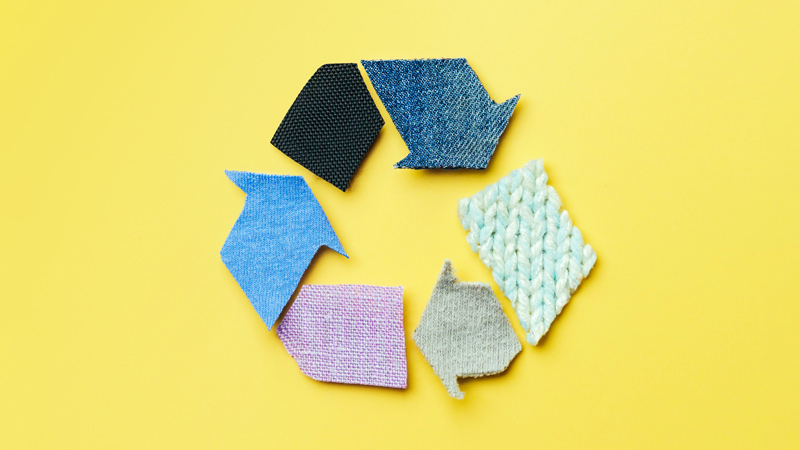The global population is expected to increase by two billion people over the next 30 years, bringing our total planet population up to about 9.7 billion. The planet could use a little help, as it helps us stay alive. Every little bit of assistance counts. One way to protect what we have is to try our best to work within the bounds of a circular economy model.
A circular economy makes sure different processes are working together to build, then rebuild business concepts locally and globally for an environmentally stable future. This model opens up a whole new way to design, make and use things, because “take-make-waste” is not a good sustainable formula for our fragile planet.
“At its core, this model is about taking the waste and pollution out of products,” said Emily Gigot, Sustainability Manager at SanMar. “This in turn keeps as many materials as possible out of the world’s landfills and makes a positive impact on the environment.” SanMar participates in the circular economy by making a shirt from 100% recycled fabrics: the District® Re-TeeTM.
The production of new raw materials like cotton and polyester take resources, but the Re-TeeTM eliminates the need for those resources, by turning waste into a new raw material.
Let’s face it. Dyeing is an unavoidable part of making SanMar’s products. Even a white t-shirt goes through a certain lightening process. All of it is an energy and water-intensive procedure that if not done responsibly, can have long-term harmful effects on the environment.
The colors of the Re-TeeTM come from original cotton scraps from the manufacturing process. The scraps are broken down to fibers. Then it is spun with the recycled polyester fibers to make the recycled yarn. That yarn is knitted into fabric, washed, cut and sewn into the Re-TeeTM. The wet dye process is eliminated, reducing the environmental impact.
This is the equivalent to saving 3,404 glasses of water, or skipping over six weeks of showers (44.70 to be exact). Choosing the Re-TeeTM is equivalent to “unplugging” and going computer-less for a whole day at work (8.34 hours). This is why we are so proud of the District® Re-TeeTM.
There are more recycled fabric items on the way. We are taking the first of what we hope are many more steps towards positive progress in the circular economy.
How do you keep your business sustainable? Join the conversation and let us know on Facebook, LinkedIn, Twitter and Instagram. And don’t forget to register for our next webcast – Business Practices for a Better World – where Emily will be joining Holly and Brandon for a deep dive into running a sustainable and responsible promotional apparel business.
